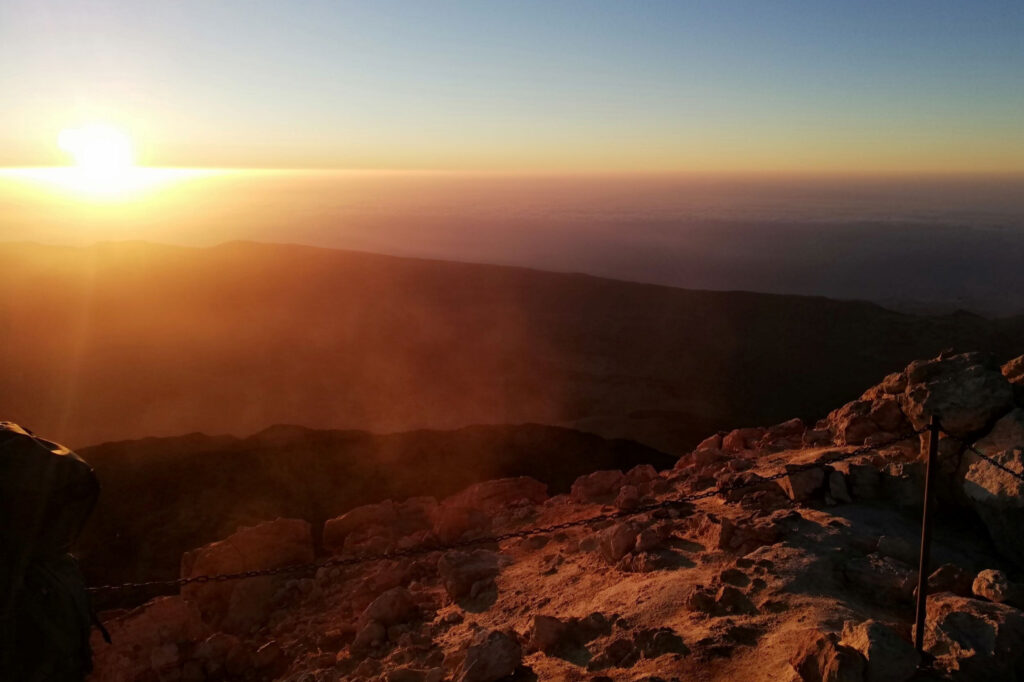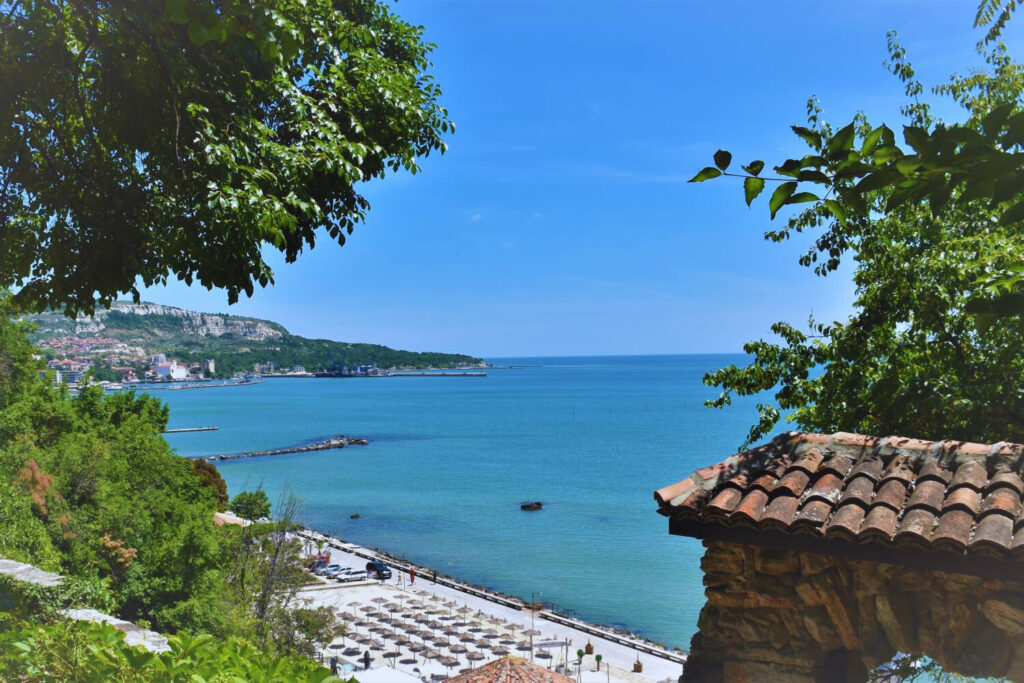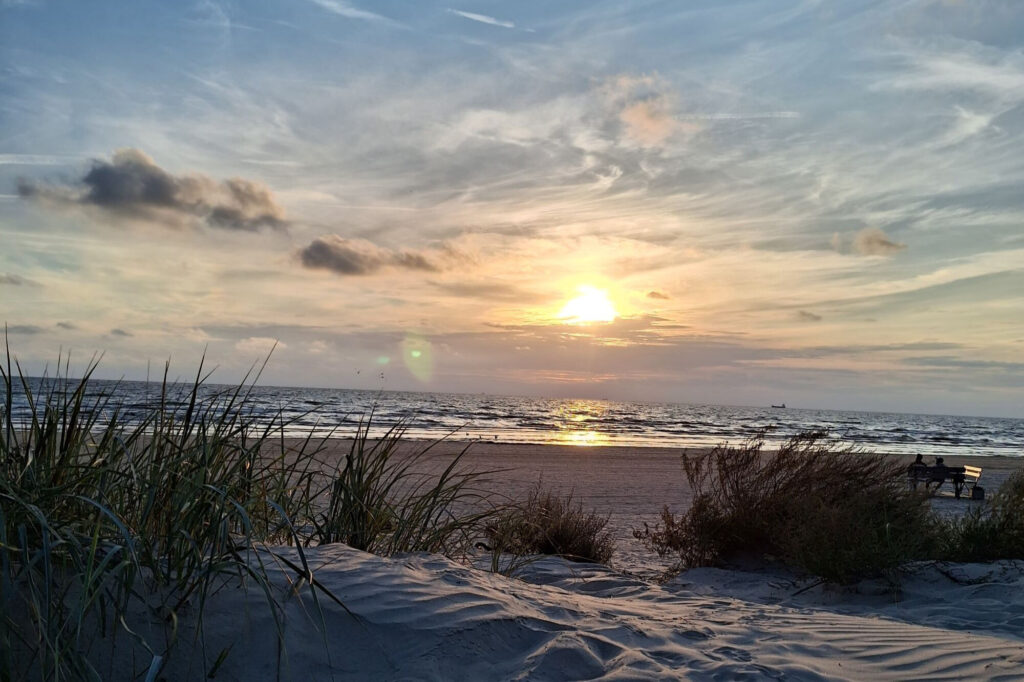…Light fumes were emanating from the ground accompanied by a strong scent of sulfur as we were climbing the last steps of Mount Teide. Where we were about to witness the most beautiful sunrise, we have seen…
Altavista Refuge – remains closed until further notice, without a specific reopening date.
This blog post may contain affiliate links and we may earn a commission from qualifying purchases.
Have you ever visited Teide National Park? This incredible natural wonder is located in the Canary Islands on the beautiful island of Tenerife and features the impressive Teide volcano, the highest peak in Spain at 3,718 meters (12,198 feet). It’s also the third tallest volcanic structure on Earth. The surroundings of Teide are simply stunning, with a constantly changing landscape of textures and colors that will leave you breathless. Additionally, the park is famous for its mesmerizing “sea of clouds”, which forms in the background, creating a visual masterpiece that is truly unforgettable.
Getting to the Montaña Blanca Teide trail starting point:
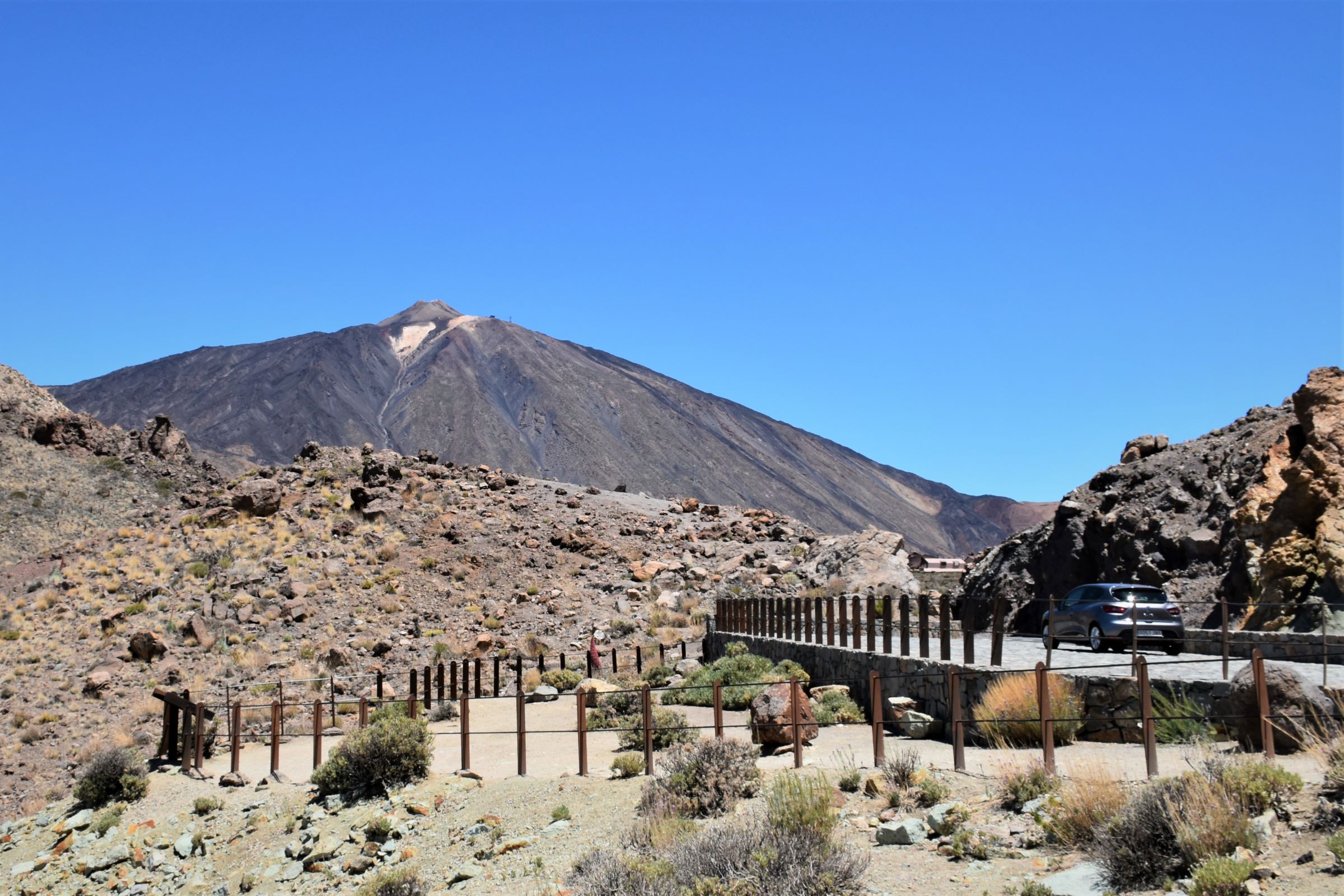
To reach the starting point of the Montaña Blanca Teide trail, there are a few options available. You can rent a car, take a bus (known as Guagua), or join a tour.
However, we recommend renting a car such as Autoreisen for greater flexibility in your travel and exploration of Tenerife Island. It is important to note that when renting a car, you will have to park it in one of the available parking lots overnight. Unfortunately, these parking lots are not secure. Therefore, we advise against leaving any valuable belongings in the car or plain sight. It is not uncommon for car windows to be smashed in order to steal valuables.
If you’re looking for a budget-friendly way to get to Mount Teide, taking a bus is a great option. Locals call them Guaguas, and they’re a lot cheaper than renting a car or joining a tour. Just keep in mind that it might be a slower option, and you’ll have to rely on the bus schedules. If you’re coming from Puerto de la Cruz, you can take the Mount Teide bus no. 348. And if you’re coming from Costa Adeje, the Mount Teide bus no. 342 will get you there.
If you want to conquer Teide with ease, taking a tour is the best option. There’s no need to worry about planning as there are many tours available to choose from. All you have to do is select one and make sure you arrive on time at the designated pick-up spot. However, it’s important to note that taking a tour can be costly and may not be the most budget-friendly option.
Climbing the Peak of Teide before Sunrise:
At around 2 pm, we parked our rental car at Cañadas Del Teide Parking and began our hike towards the Montaña Blanca Teide trail starting point, which was about 2.5 km or 30 minutes away. This marked the start of our hike up Mount Teide.
The first part of the hike started wonderfully! We easily found our way along the unpaved trail wide enough for 4×4 to drive through and the scenery in Teide National Park was breathtaking. We were particularly fascinated by the “sea of clouds” – it was mesmerizing! As we walked, we discovered some big black rocks strewn about which we later discovered were called Huevos del Teide (Teide’s eggs). We spent two and a half hours hiking and taking some wonderful pictures, until we finally made it to the crossroad that led to Montana Blanca and a zig-zag track to the Altavista Refuge, and ultimately to Pico del Teide. It was an amazing experience, and we were excited to see what else this incredible journey had in store for us.
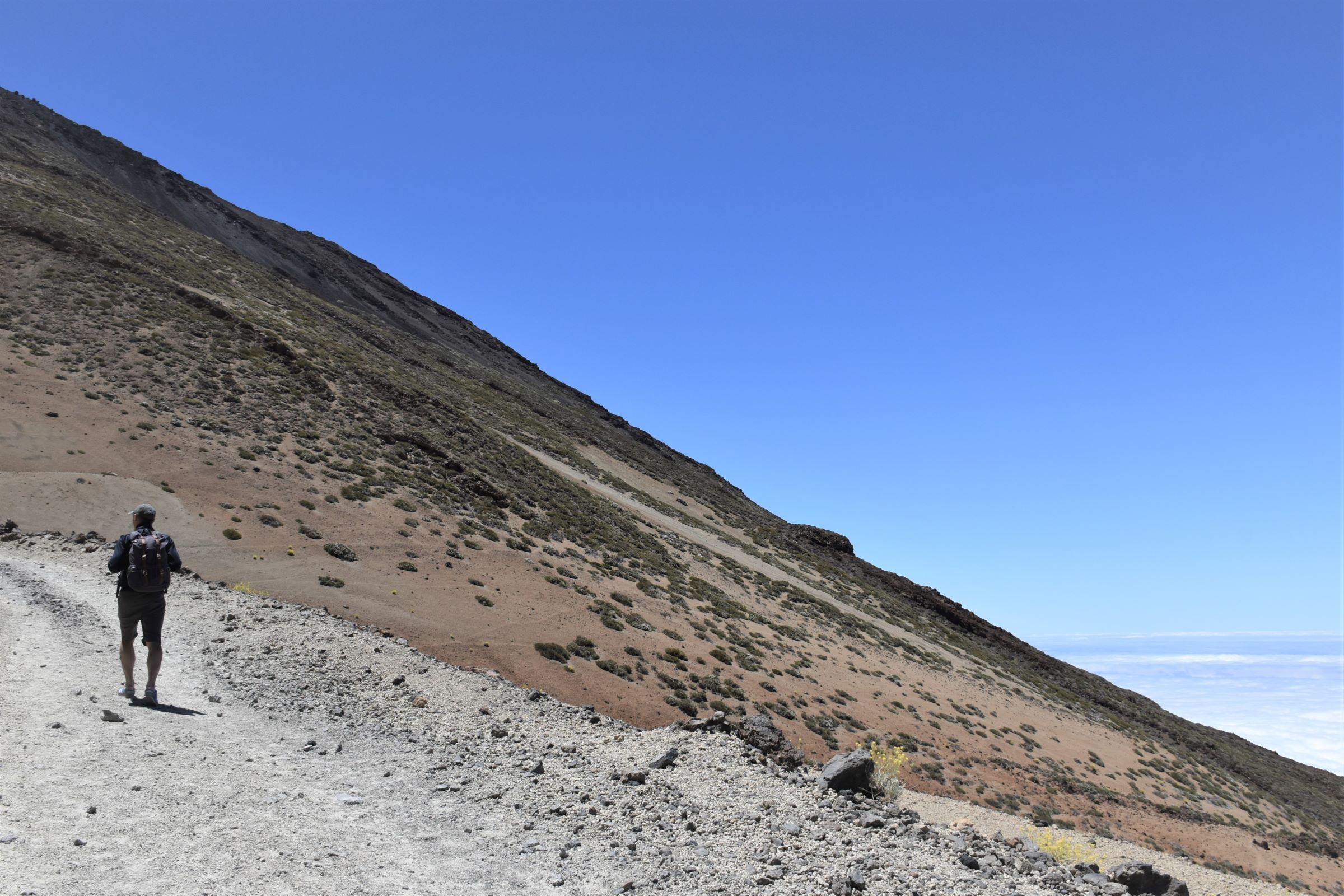
At a crossroad, as we took a water break, we watched other hikers start the steeper part of the trail, which was 2.4 km (1.49 mi) long and took another two and a half hours to climb. The trail was a zig-zag path that became moderately difficult halfway to Refugio Altavista, as we found ourselves stopping more often to rest and catch our breath.
We finally reached the refuge half an hour later than planned, just before 8 pm. It was amazing how our fatigue and difficulty breathing vanished once we reached Altavista Refuge at 3,270 m (10,728 ft). We were in high spirits after having some cheap pasta and tea and taking some dramatic pictures of the island’s views. We then headed to our bunk beds, which were in a smaller building than the main one. This turned out to be a better choice as we had to share the amenities with fewer people.

The following morning, we woke up early to enjoy a well-deserved breakfast and coffee before embarking on the last leg of our journey. The hike to Rambleta, where the cable car station is located, took us about two hours. Hiking in the dark before dawn, with only the flicker of headlamps and the quiet rustle of other hikers passing by, was a magical experience we will never forget.
Normally you would need a permit to get to the Top of Teide but if you manage to come to Rambleta well before 9 AM just as we did hike there at about 6 AM then there’s no need for it. From the cable car station to the Peak of Teide is about a 40 min climb through a well-seen zig-zag path. The sun was about to rise as we reached the crater. Light fumes were emanating from the ground accompanied by a strong scent of sulfur as we were climbing the last steps of Mount Teide. Where we were about to witness the most beautiful sunrise, we have seen… a spectacular view that has taken our breath away. The colors of the sun slowly rising above the horizon and spreading across the sky were mesmerizing. We couldn’t believe our eyes. It was a moment that we will cherish forever. As the sun rose higher, we could see the entire island of Tenerife stretching out before us. The panoramic view was absolutely stunning. We took our time taking pictures and admiring the beauty of the great outdoors before making our way back down.
The hike down was just as enjoyable as the hike up, and we were able to take in the scenery at a leisurely pace. Overall, it was an unforgettable adventure that we would highly recommend to anyone visiting Tenerife.
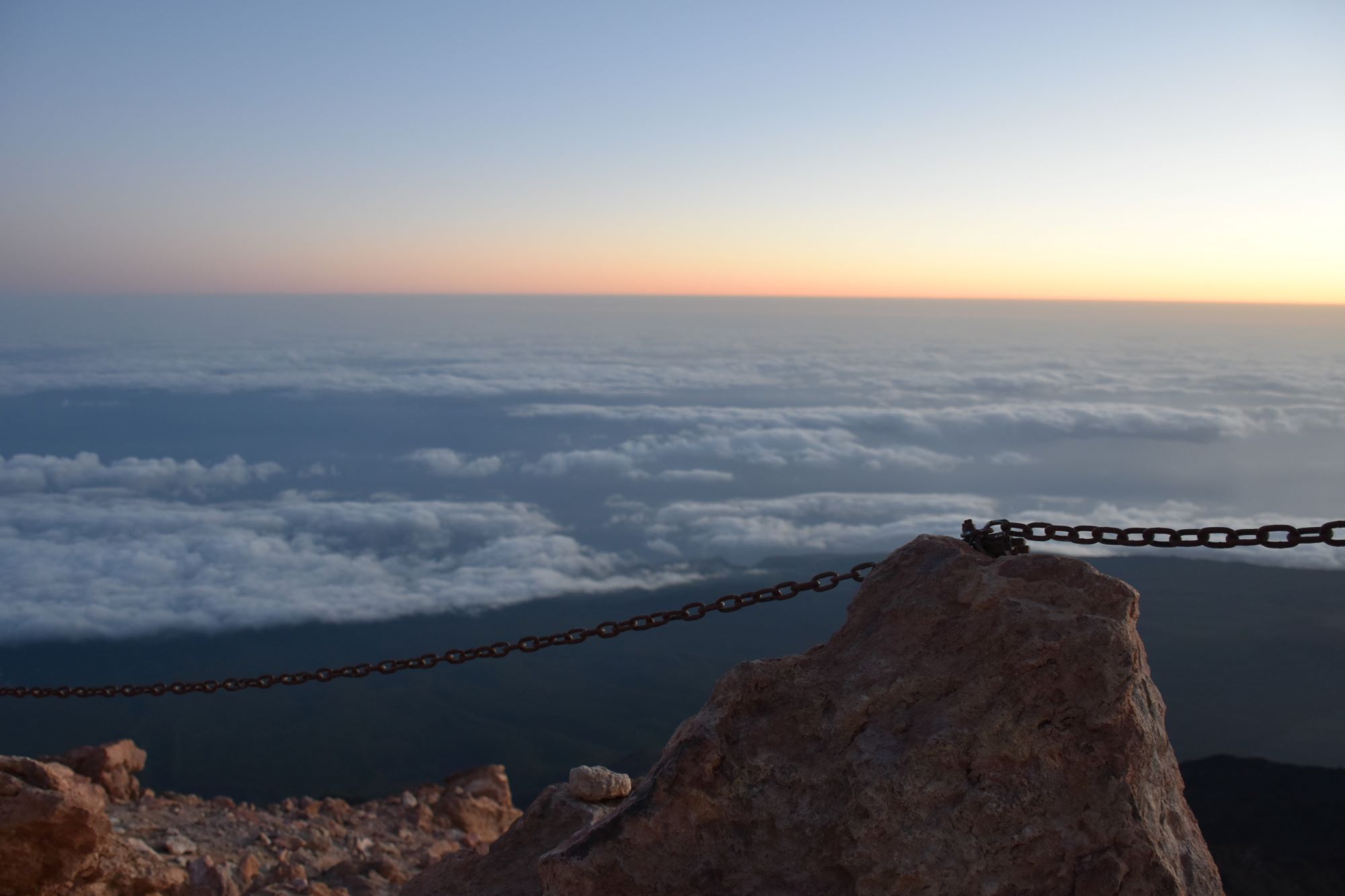
Things to know before hiking to Teide Peak:
- Renting a car – for greater flexibility in your travel and exploration not only of Teide Mountain but also other beautiful spots on Tenerife Island. Autoreisen is a great option for car rental, as it is the cheapest which requires no deposit.
- Teide Permit – is a permit to access Teide crater which is essential if you intend to hike up to the Peak of Teide from 9 AM to 5 PM. The permit is free of cost, but you must reserve it ahead of time on the Central de Reservas Online del Organismo Autónomo de Parques Nacionales website. However, if you plan on climbing outside of those hours, there is no need for a permit.
- The cable car – is the most convenient way to get to the top of Teide Mountain, but it comes at 40 euros return ticket for non-Canary Islands residents. You can book your tickets in advance here. The cable car starts operating at 9 AM, so you won’t be able to catch the sunrise this way. But if you are looking for a way to avoid climbing all the way back down, buying a one-way ticket for 22 euros (for non-residents) is a great option. It’s worth considering if you want to save yourself some time and effort. If you plan on climbing to the top, make sure to obtain a permit ahead of time.
- Altavista Refuge – remains closed until further notice, without a specific reopening date. with one-way cable car tickets (for combined reservations only) cost 69 euros for both of us. You have to book it well in advance for staying the night there.
- Wear warm clothing and bring layers – you will be hiking between 2,300 and 3,718 meters. Even on sunny days, it can be chilly and windy in the park. Pack your thermal jacket, beanie, and gloves. Good hiking boots are a must, but trail running shoes are better for this hike in our opinion.
- The food – we packed was some bananas, a couple of protein bars, a bag of various nuts, instant noodles, and coffee for that extra morning kick. And if you’re craving some sugar, you can always hit up the vending machine at the Altavista Refuge.
- Water – bring plenty of it when planning a trip to high-altitude locations. Staying hydrated is essential for avoiding altitude sickness and ensuring that your body is able to absorb oxygen properly. Remember to drink enough water to compensate for any water loss you may experience during your trip. By taking care of your body in this way, you’ll be able to fully enjoy your high-altitude adventure. We took 3 bottles of 1.5-liter water and then used about 1 liter of water from the refuge for instant noodles and coffee.
- Altitude sickness – can be a real problem. Remember to prepare yourself adequately before embarking on a hike at a high altitude. It’s crucial to be mindful of the signs of altitude sickness, such as headaches, dizziness, nausea, and tachycardia. If you experience any of these symptoms, it’s best to stop and descend the hike immediately to avoid any potential risks. One of the best ways to prevent altitude sickness is by staying hydrated and drinking plenty of water to compensate for the loss of fluids and help your body absorb oxygen more efficiently.
- Sunburn – can be a real problem. During a hike, my ears were exposed to the sun and I ended up with a painful burn. Using sun cream, wearing sunglasses, and a hat can all help protect you from the sun’s harmful rays, no matter the season. So be sure to take the necessary precautions to avoid sunburn.
- Volcano Teide webpage – has some very useful info, such as the status of facilities, trails, and access roads to Teide. Also, they are offering various tours across the island. So be sure to check it out before you go hiking!

Other ways of getting to the Teide’s Top:
1. Getting up by Cable Car.
The cable car is the most convenient way to reach Teide Mountain’s top, but it comes at 40 euros for non-Canary Islands residents. You can book your tickets in advance here.
The cable car starts operating at 9 AM, so you won’t be able to catch the sunrise this way. If you plan on climbing to the top, make sure to obtain a permit ahead of time. This can be done on the Central de Reservas Online del Organismo Autónomo de Parques Nacionales website.
2. Hiking through Sendero (trail) no 23 followed via Sendero no 9.
If you’re interested in reaching the top of Teide from the west side of the mountain, I suggest hiking through Sendero no 23 followed by Sendero no 9 to the Rambleta. This route will take you to Pico Viejo, the second-highest peak on Tenerife Island. Although it’s a challenging hike, the stunning views and sense of accomplishment, once you reach the top, make it well worth it. Be sure to prepare accordingly with plenty of water and appropriate hiking gear.
We hope this post will help to witness the breathtaking sunrise from Spain’s highest peak at 3718m!

